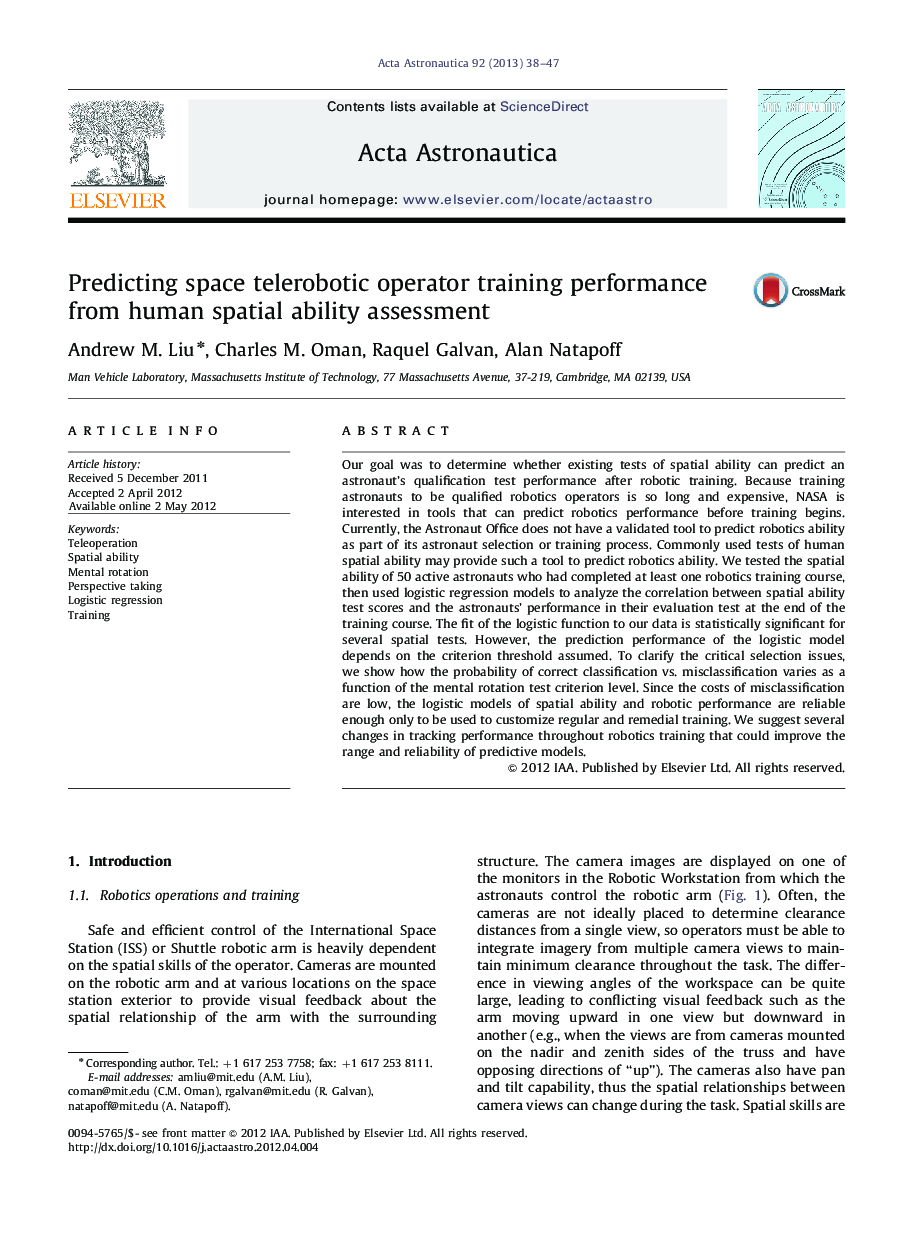| Article ID | Journal | Published Year | Pages | File Type |
|---|---|---|---|---|
| 1714924 | Acta Astronautica | 2013 | 10 Pages |
Our goal was to determine whether existing tests of spatial ability can predict an astronaut's qualification test performance after robotic training. Because training astronauts to be qualified robotics operators is so long and expensive, NASA is interested in tools that can predict robotics performance before training begins. Currently, the Astronaut Office does not have a validated tool to predict robotics ability as part of its astronaut selection or training process. Commonly used tests of human spatial ability may provide such a tool to predict robotics ability. We tested the spatial ability of 50 active astronauts who had completed at least one robotics training course, then used logistic regression models to analyze the correlation between spatial ability test scores and the astronauts' performance in their evaluation test at the end of the training course. The fit of the logistic function to our data is statistically significant for several spatial tests. However, the prediction performance of the logistic model depends on the criterion threshold assumed. To clarify the critical selection issues, we show how the probability of correct classification vs. misclassification varies as a function of the mental rotation test criterion level. Since the costs of misclassification are low, the logistic models of spatial ability and robotic performance are reliable enough only to be used to customize regular and remedial training. We suggest several changes in tracking performance throughout robotics training that could improve the range and reliability of predictive models.
► We examined the relationship between spatial ability and space telerobotic tasks. ► NASA is interested in tools to predict robotics performance before training. ► The fit of logistic functions to our data is statistically significant. ► ROC curve analysis shows moderate predictor reliability. ► Predictors are suitable for customizing training but not for astronaut selection.
